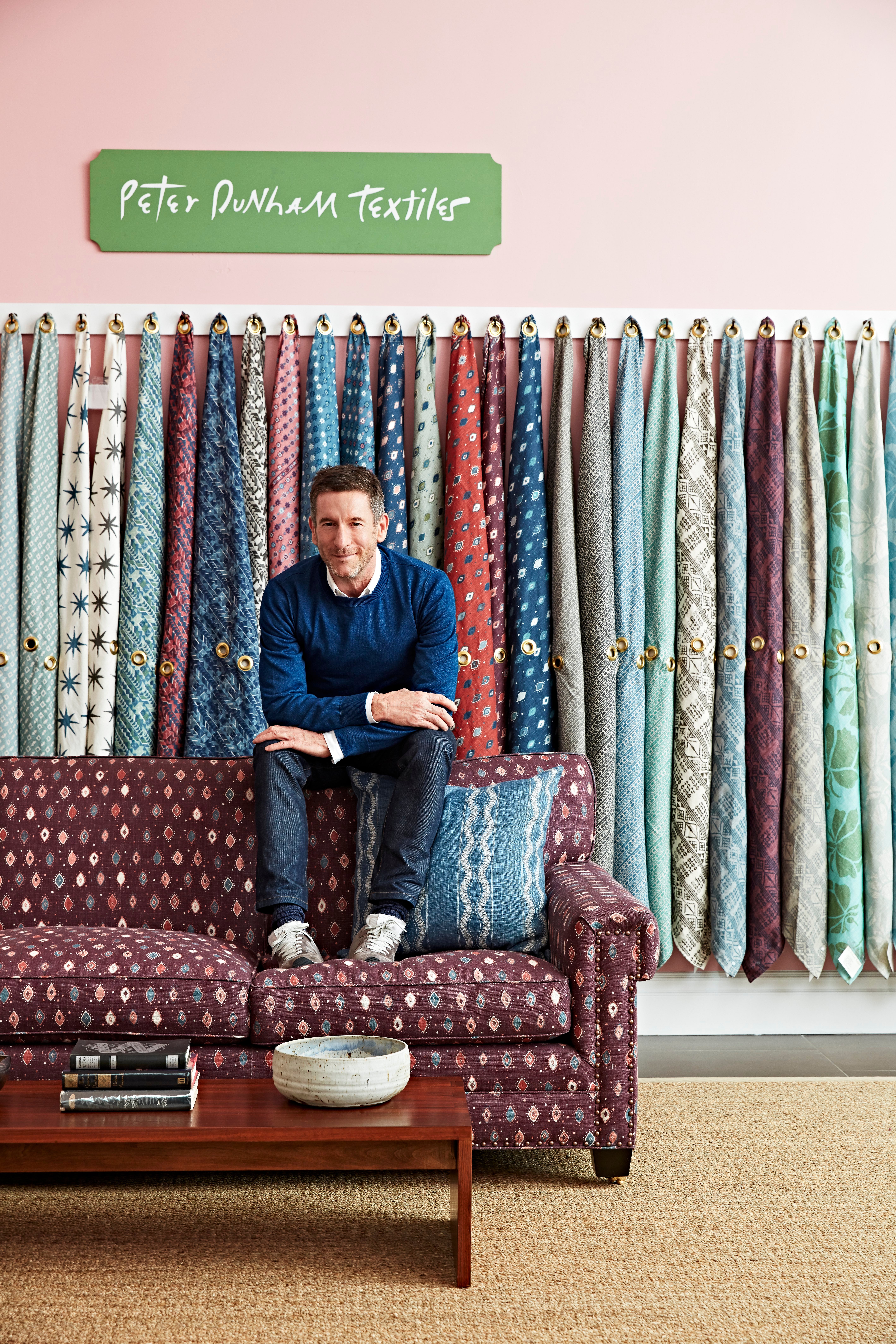“There’s no time like the present,” Peter Dunham tells host Dennis Scully on the latest episode of The Business of Home Podcast, discussing his recent expansion to New York. The French-raised, British-educated “textile king of Hollywood”—whose multihyphenate credentials include interior design, textile design and owning multiline Los Angeles showroom Hollywood at Home—decided to finally put down roots on the East Coast. The result is Peter Dunham Home & Garden, a showroom in the New York Design Center where visitors can find a selection of vintage pieces, textile swatches and the designer’s own custom furniture collection. Dunham had been toying with the idea for years, but the financial and time commitment held him back—until now. “For the past few years, we’ve been doing more than 50 percent of our business east of the Mississippi,” he says. “New York is such an enormous, dynamic market on its own. In addition, people [from all over] America shop in New York. Certainly from the East Coast, and even from the West Coast, they want to see what's going on in New York.”
Dunham, who estimates 80 percent of his business comes from the trade, was drawn to the NYDC because of its focus on the design community. While he was initially apprehensive because of 200 Lex’s history as a furniture-centric destination, the building’s recent success in attracting fabric companies—the backbone of Dunham’s business—motivated him to take the plunge. “Textiles always seem like lipstick in a recession or in a depression. A woman might not be able to buy a whole outfit or new handbag or new pair of shoes, but she could always go and buy herself a beautiful Chanel lipstick,” quips the designer.
Elsewhere in the episode, he discusses the differences between design culture in New York and Los Angeles, the e-commerce arm of his business and associated shipping costs, and the possibility of expanding abroad.
Crucial insight: Dunham finds face-to-face meetings—which have dwindled since the start of the pandemic—essential. “It’s really difficult when you’re not in person, to gauge the room as a designer and see where you can push,” he says. “Is it the wife that’s resistant to the idea of the fireplace in the bathroom? Was it the husband? And why? A big part of our business is understanding the psychology and the decisions that are happening in real time around you.” The designer urges his clients to meet on-site because even with access to images and renderings, he believes we overestimate people’s sense of visualization. “In person, you can have more humor, you can read the room, you can diffuse—it’s much easier to get on,” he explains.
Key quote: “At the end of the day, I am not really a businessman. I’m a designer who likes to be in the business. I like different sources of income, and I also love the creativity of being able to design and make furniture and textiles and accessories in people’s houses. I’m a little quirky at what I do, and people want that quirkiness, and they don’t want the generic form of you.”
This episode is sponsored by Loloi, Crypton and Rowe. Listen to the show below. If you like what you hear, subscribe on Apple Podcasts or Spotify.
The Thursday Show
BOH executive editor Fred Nicolaus and host Dennis Scully discuss the biggest news in the industry, including more challenges for furniture brands, whether the American dream still includes a house with a white picket fence, and a look at how paint colors get their names. Later, design editor Tori Mellott joins the show to talk about her new book, Southern Interiors: A Celebration of Personal Style.
This episode is sponsored by Hartmann&Forbes and Chelsea House. Listen to the show below. If you like what you hear, subscribe on Apple Podcasts or Spotify.





























